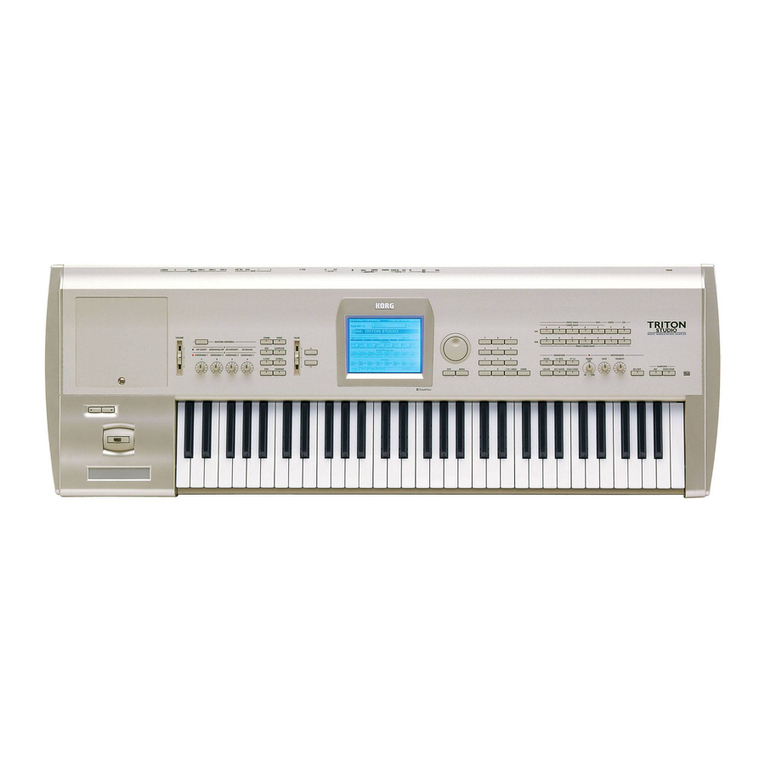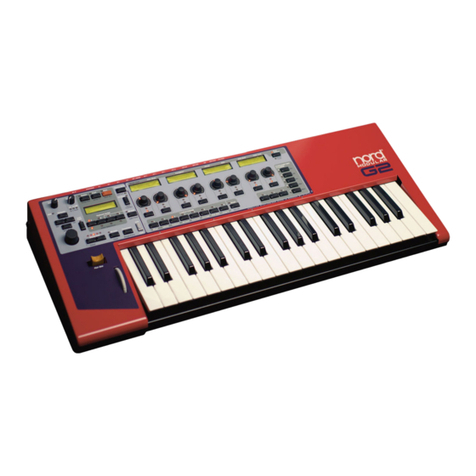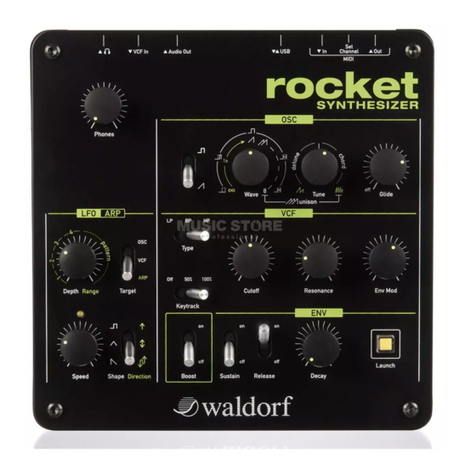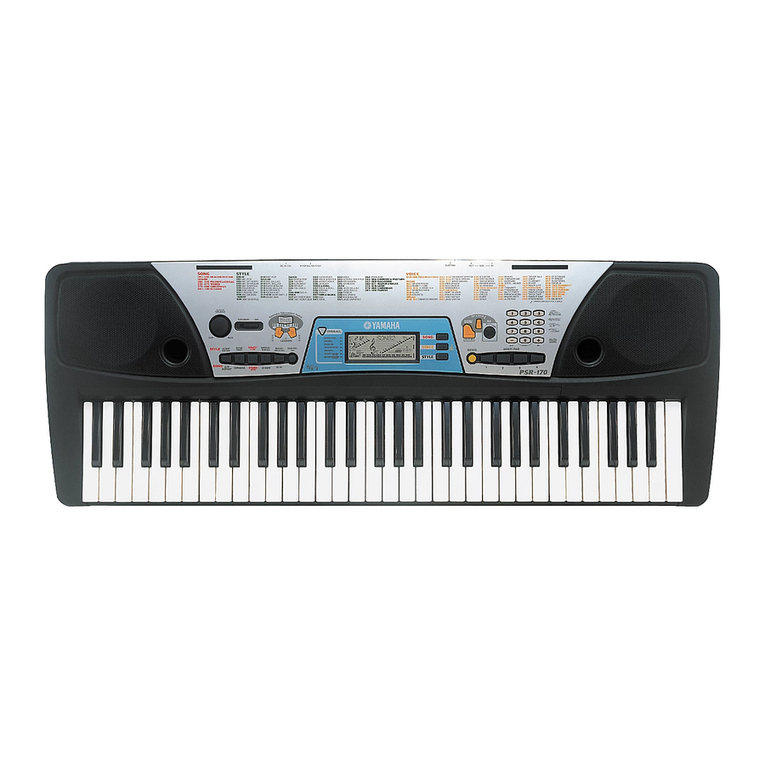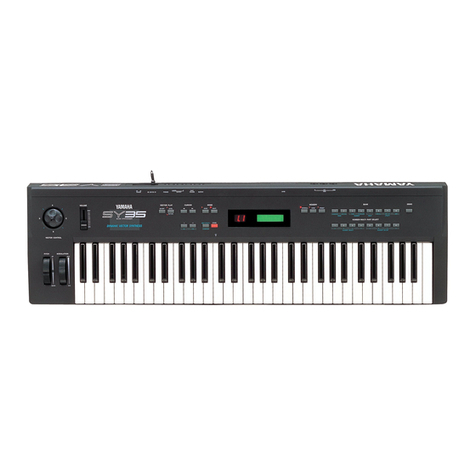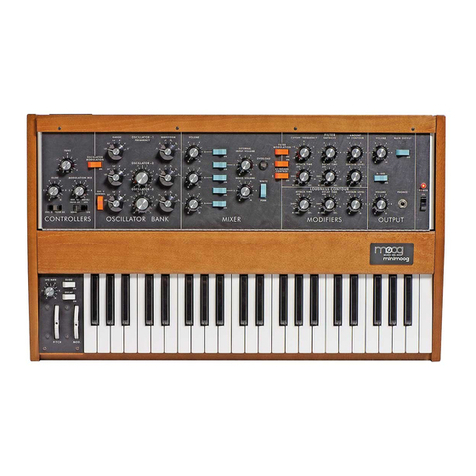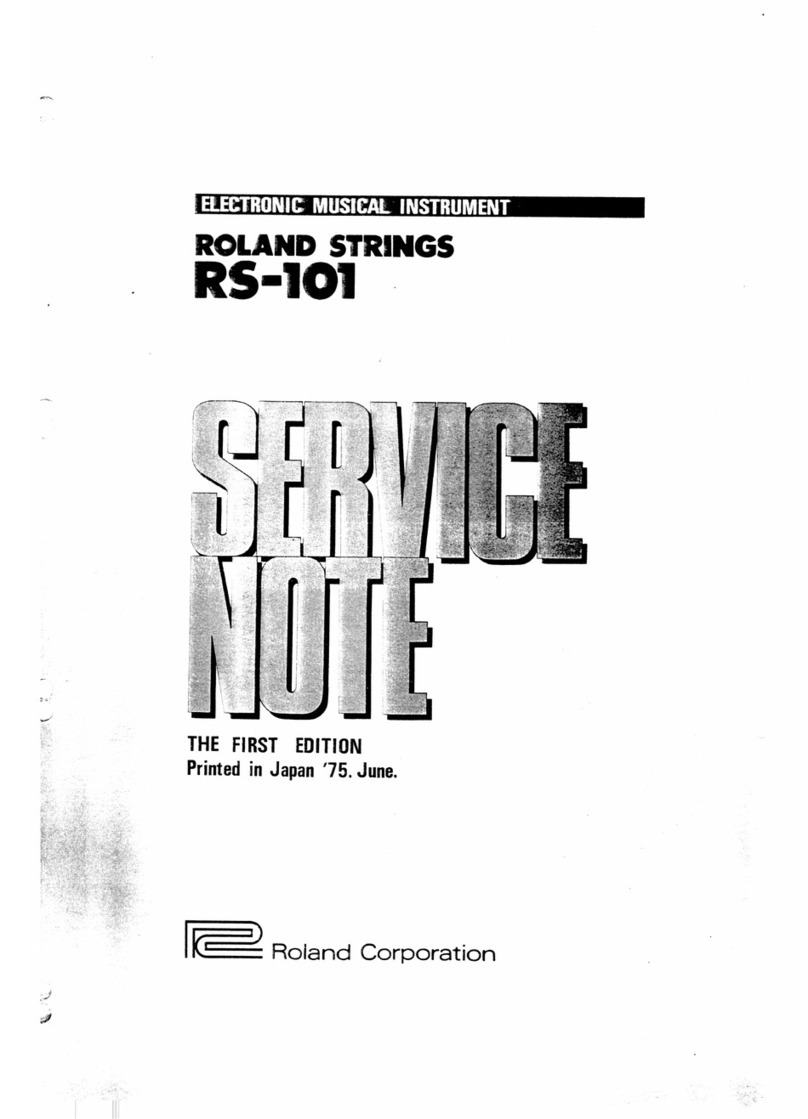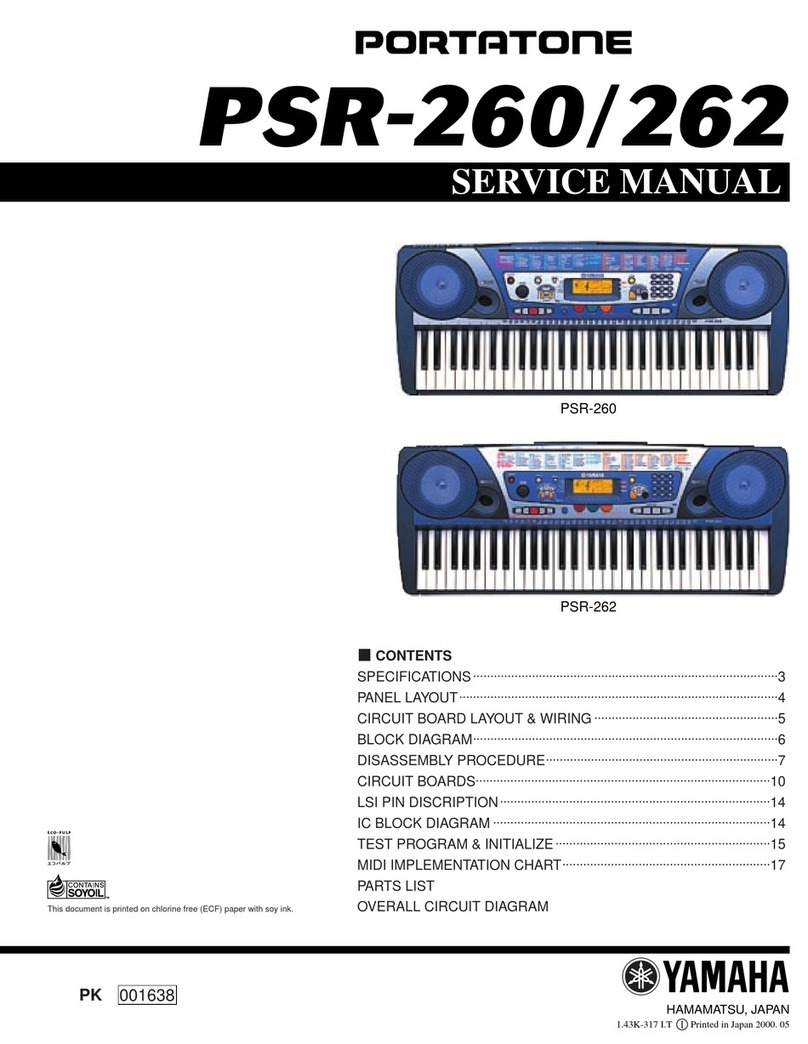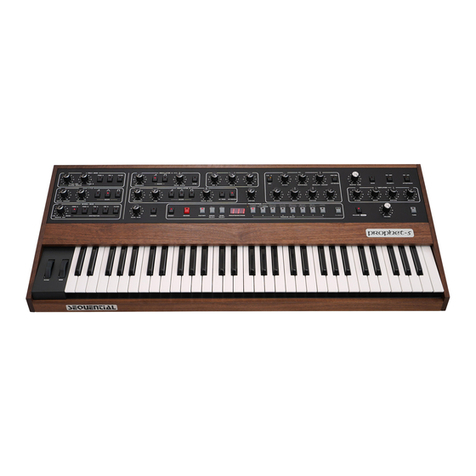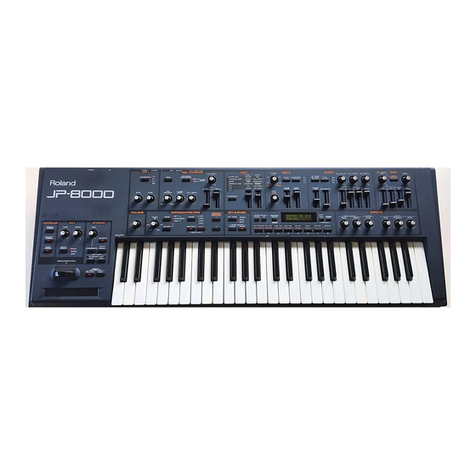teenage engineering 400 User manual

06.01.22, 11:11
400 guide - teenage engineering
https://teenage.engineering/guides/po-modular/400
1/18
400
pocket
operator
modular
user guide
ガイド
V
.
2
.
0
notice
.
read
this
first
.
the product is esd sensitive and is sold without casing.
battery information:
install only new batteries of the same type.1. failure to insert batteries in the correct polarity, as
indicated in the battery compartment, may shorten
the life of the batteries or cause batteries to leak.
2.
do not mix old and new batteries.3. do not mix alkaline, standard (carbon-zink) or
rechargeable (nickel cadmium) or (nickel metal
hybride) batteries.
4.
do not dispose of batteries in fire.5. batteries should be recycled or disposed of as per
state and local guidelines.
6.
fcc statement:
note: this equipment has been tested and found to
comply with the limits for a class b digital device,
pursuant to part 15 of the fcc rules. these limits are
designed to provide reasonable protection against
harmful interference in a residential installation. this
equipment generates, uses and can radiate radio
frequency energy and, if not installed and used in
accordance with the instructions, may cause harmful
interference to radio communications. however, there is
no guarantee that interference will not occur in a
particular installation.;
if this equipment does cause harmful interference to
radio or television reception, which can be determined
but turning the equipment off and on, the user is
encouraged to try to correct the interference by one or
more of the following measures;
reorient or relocate the receiving antenna•increase the separation between the equipment and
receiver
•
connect the equipment into an outlet on a circuit
different from that to which the receiver is
connected.
•
consult the dealer or an experienced radio/tv
technician for help.
•
this device complies with part 15 of the fcc rules.
operation is subject to the following conditions;
this device may not cause harmful interference, and1. this device must accept any interference received,
including interference that may cause undesired
operation.
2.
caution: changes or modifications not expressly
approved by the party responsible for compliance could
void user
’
s authority to operate the equipment.
teenage engineering warrants that this product will be
free from defects in material or workmanship for a
period of 12 months from the date of teenage
engineering
’
s shipment of the product to you, the
customer. in the event of a defect covered by this
limited warranty, teenage engineering will, at its option
and free of charge to customer, repair, replace or refund
the purchase price paid.
TEENAGE ENGINEERING MAKES NO OTHER EXPRESS
WARRANTIES EXCEPT AS PROVIDED HEREIN, AND
ANY AND ALL IMPLIED WARRANTIES OF
MERCHANTABILITY OR FITNESS FOR PARTICULAR
PURPOSE SHALL ONLY BE IN EFFECT DURING THE 12
MONTH WARRANTY PERIOD PROVIDED HEREUNDER.
TEENAGE ENGINEERING'S LIABILITY ON ANY
WARRANTY CLAIM SHALL BE LIMITED TO THE
ACTUAL PURCHASE PRICE PAID. TEENAGE
ENGINEERING SHALL NOT BE RESPONSIBLE TO
CUSTOMER OR ANY THIRD PARTY FOR ANY
CONSEQUENTIAL, INCIDENTAL OR INDIRECT
DAMAGES, INCLUDING BUT NOT LIMITED TO LOSS
OF PROFITS, LOSS OF DATA, REVENUES, SALES,
BUSINESS, GOODWILL OR USE.
what does this limited warranty not cover?
teenage engineering has no obligation to repair, replace,
or provide refunds in the following instances:
if the alleged defect arises because customer has
altered or repaired the product without the prior
written consent or authorization of teenage
engineering;
•
if customer did not follow any applicable instructions
for proper storage, usage, or maintenance of this
product;
•
if customer has failed to notify teenage engineering of
any defect where the defect should have been
reasonably apparent on inspection; or
•
if customer fails to notify teenage engineering of the
defect within 12 months of teenage engineering's
shipment of this product to customer. this limited
warranty does not cover the cost of shipping the
defective product to teenage engineering for repair, or
the cost of shipping the repaired or replacement
product to you. how do customers receive warranty
service? please call your teenage engineering
customer service representative for details on how to
raise an issue in relation to your product.
•

06.01.22, 11:11
400 guide - teenage engineering
https://teenage.engineering/guides/po-modular/400
2/18
1
.
module
assembly
1
.
1
installing
the
standoffs
before connecting the modules first
add the standoffs to the back of the
faceplate to make installation easier.
start from the bottom and continue
up leaving the power distribution until
last.
to attach the standoffs, place the
screws through the holes from the
outside, and using a pair of needle
nose pliers, hold the standoffs firmly
at the back while screwing.
now repeat this procedure for all
modules leaving only the power distro
without standoffs.
note
:
be careful not to over tighten.
1
.
2
power
distro
the power distro attaches to the frame differently than the other modules.
first cut the standoffs from the psu in half using a pair of pliers or wire
cutters. then place the screws through the holes and place the power distro
on the back, on top of the pre-attached protective sticker cover.
finally attach the shorter standoffs to
the top of the frame to fasten the
power distro. make sure it is seated
flush to the back of the faceplate.
1
.
3
installing
the
modules

06.01.22, 11:11
400 guide - teenage engineering
https://teenage.engineering/guides/po-modular/400
3/18
place the front plate face down. tip:
put a soft surface such as towel
beneath.
place the modules on top of the
standoffs and ensure the jacks are
correctly aligned with the holes.
screw the modules to the standoffs.
ensure the screws on the faceplate
are not rotating. be careful not to over
tighten.
once screwed in place, plug in the
cables to the power sockets.
it is advised to go from right to left
and top to bottom. start with mixer
and end with the speaker module, to
avoid crossing power cables and too
much tangle.
1
.
4
speaker
assembly
1
.5
psu
™
snap
!
this
side
up
!
the speaker module pcb comes with
a part that is not needed. firmly and carefully break off the
square part. take care when installing
the speaker as the cable connecting
the speaker unit to the pcb needs to
fit nicely.
the psu holds 8 x aa batteries. with
high quality rechargeable batteries
you can expect up to about 5 hour
battery life. it is recommended to use
a power adapter whenever possible.
2
.
basics
2
.
1
types
of
signals
in modular synthesis there are two
types of signal. audio signals and
control voltages (cv). audio signals are
for sounds and cv is for controlling
things. these two different signals will
be used to connect the different
modules together.
this is how sounds and patterns are
created in a modular system. the
beauty of modular is that you can
pretty much connect anything to
anything, creating all kinds of
relationships and interesting sounds,
that all dynamically interact with each
other.
that said you should generally avoid
connecting outputs to outputs or
inputs to inputs.
2
.
1
.
1
audio
signals

06.01.22, 11:11
400 guide - teenage engineering
https://teenage.engineering/guides/po-modular/400
4/18
in a modular synthesizer it is usually the job of the
oscillators to make the sounds that are processed by the
rest of the system. the 400 includes three oscillator types:
a square, a saw and a sine.
lets hear each of them through the 400's built-in speaker.
first let's make sure the volume of the speaker module is
turned down. locate the volume knob on the speaker
module and turn it about mid way.
pro-tip: you can use audio
signals as cv for some very
interesting results and some
cv modules such as the lfo
can run at audio rates.
warning
:
never connect
headphones directly to the
outputs of the 400. you can
damage your ears and your
headphones if you do this,
so be very careful.
to hear the sound of the oscillator we need to connect it
to the speaker. to do this take a yellow cable and connect
it to any of the three jacks labeled output on the top of
the square oscillator. any of these jacks is fine as all three
will output the same signal. take the other end of the
cable and plug it into the jack on the speaker called right.
now we can change the volume of the speaker by
turning the volume knob.
if you do not hear a sound it may be that your oscillator
tuning is too high or too low. turn the tune knob to alter
the pitch of the oscillator so that it is in the audible range.
also turn the pwm level all the way to the left.
2
.
1
.
2
control
voltages

06.01.22, 11:11
400 guide - teenage engineering
https://teenage.engineering/guides/po-modular/400
5/18
control voltages are used to control different parts of the
modular system. for example in the last example we
manually altered the pitch of the oscillator but in this
example we will use a control voltage to alter the pitch
for us.
continuing from the last patch: set up a control voltage to
control the pitch of our oscillator.
use the triangle wave from the lfo. locate the lfo module
and plug a cable into either of the triangle outputs.
tip: set the rate to its slowest setting by turning the rate
knob all the way to the left.
plug the other end of the cable into the input labeled
control on the square oscillator.
turn the knob underneath that is labeled level all the way
to the right. you should hear the pitch slowly rising and
falling.
now lets change the 'rate' (speed of the control voltage).
very slowly turn the knob labeled rate on the lfo to the
right. the change in pitch should become faster until
eventually we reach what is called audio rate modulation.
pro-tip: audio rate is a term
used to describe cycling
control signals that move so
fast they actually become
the lfo is actually just an
oscillator that can reach
very slow speeds. by
modulating parameters at

06.01.22, 11:11
400 guide - teenage engineering
https://teenage.engineering/guides/po-modular/400
6/18
audible and enter the
audible frequency range. audio rates we can get all
kinds of interesting effects.
2
.
2
a
simple
mono
synth
let's patch a simple mono synth including the following
modules: [saw], [filter], [vca], [env], [speaker], [sequencer]. the diagram shows the flow of audio signals and control
voltages when patching this mono synth.
first step is to connect the sound source [saw] to the
filter. connect a patch cable to any of the [saw] outputs.
connect the other end to the jack labeled input on the
[filter]. this will pass the audio generated from the
oscillator to the filter. now open the filter all the way by
turning the frequency knob all the way to the right.
next: take the filter output and connect to the input on
the vca. turn up both the level and the gain on the vca.

06.01.22, 11:11
400 guide - teenage engineering
https://teenage.engineering/guides/po-modular/400
7/18
then connect the output of the vca to the left speaker
input. you should hear a constant note. if you don't adjust
the tuning of the saw oscillator or check that you opened
the filter by moving frequency all the way to the right.
note
:
the vca or voltage controlled amplifier will control
the volume of the signal. it is possible to do that manually
using the level and gain knobs. this patch uses the
envelope for this.
now connect the envelope output to the control input on
the vca. this will let the envelope signal control the
volume of the sound. the envelope has to be triggered to
know when a note is sounded. we can do this from the
sequencer which we will also use to set the notes of the
sequence.
connect either clock out or po out of the sequencer to
the trigger input of the envelope. the clock pulses will
trigger the envelope every step of the sequence, where
po out triggers every other step. adjust the adsr (attack,
decay, sustain and release) on the envelope to get
different changes in the volume. try setting attack all the
way to the left.

06.01.22, 11:11
400 guide - teenage engineering
https://teenage.engineering/guides/po-modular/400
8/18
THIS IS WHAT THE FINISHED PATCH SHOULD LOOK LIKE.
2
.
3
a
talking
filter
patch
now lets make the classic talking filter patch. for this
patch we will use the following modules: [square], [filter],
[noise], [rand], [sequencer] and [speaker].
the diagram shows the flow of audio signals and control
voltages when patching this talking filter. remove all
cables to get ready for patching.

06.01.22, 11:11
400 guide - teenage engineering
https://teenage.engineering/guides/po-modular/400
9/18
first connect the audio source to the filter. patch one of
the square outputs to the audio input of the filter. connect the filter output to the speaker. turn up the
volume and open up the filter frequency to get a long
droning sound.
sine sine
through
rand
use the noise and rand to create a stepped filter. the
noise and rand modules work as a pair to create sources
of randomness in our modular system. take the saw
output of the noise module and connect it to the in of the
rand module.
the rand acts as a sample and hold. meaning the rand will
sample the voltage level of the incoming signal at a rate
determined by either the rate knob or clock input. for
example: to send a sine wave through the rand will give a
stair stepping output. the saw noise output will be used
for this patch. the saw noise creates a random pattern
making it possible to create unpredictable results. this can
be useful for adding an element of surprise to your patch.
for this patch, take the rand output and patch it to the
filter frequency input labeled control on the left of the
filter module.
set the filter control level input to max and adjust the rate
and level on the rand to create a talking filter patch.

06.01.22, 11:11
400 guide - teenage engineering
https://teenage.engineering/guides/po-modular/400
10/18
it is also possible to patch the sequencer output to the square oscillator key input and at the same time patch the
sequencer clock out or po out to the rand clock input to get a different filter frequency for each note.
THIS IS WHAT THE FINISHED PATCH SHOULD LOOK LIKE.
3
.
connections

06.01.22, 11:11
400 guide - teenage engineering
https://teenage.engineering/guides/po-modular/400
11/18
3
.
1
oplab
module 3
.
2
effect
pedals 3
.
3
modular
using the oplab module it is possible
to control the 400 from the OP-Z. to
fully use the oplab module you will
need two splitters cables (y cables).
the stereo cables provided with the
400 also work but will only give
access to the basic features of the
ZM-1 module.
when connecting to effects pedals it
is very important to be careful with
signal levels. it is possible to damage
your pedal by running the audio
through at full volume. always start
with the volume at minimum and
slowly raise it to the correct level.
it is possible to integrate 400 with
other modular systems and semi
modular synths.
why not try connecting in some extra
envelopes from your external
system?
4
.
notes
of
caution
unlike most other audio equipment, modular synthesizers output audio and
control voltage at much higher level (voltage) than other studio equipment.
for this reason we recommend the following precautions and practices.
+
-
do not connect headphones directly
to the 400. you can damage your
headphones or much worse, your
ears. always protect your hearing.
do not plug outputs of the 400
directly into equipment that is not
designed to handle the larger voltage.
for example, pocket operators, effects
pedals etc. please consult the
manufacturer of the product in
question if you are not sure.
it is generally advised that you avoid
connecting inputs to inputs or
outputs to outputs. doing so can put
unnecessary strain on the system and
over time may eventually lead to
damage.
5.
module
specs
5.
1
square

06.01.22, 11:11
400 guide - teenage engineering
https://teenage.engineering/guides/po-modular/400
12/18
square is a square wave oscillator that can be
used both as an audio signal and as an lfo, to
control, trigger and modulate other sources.
pro-tip: with pwn set to above 50% no sound is
heard. this can be great when modulated to
create interesting rhythmic effects.
note: if you do not hear a sound it may be that
your oscillator tuning is too high or too low. turn
the tune knob to alter the pitch of the oscillator
so that it is in the audible range. also turn the
pwm level all the way to the left.
output
these three identical outputs can be used simultaneously.
control
+
key
these are inputs for controlling the pitch of the square waveform. key is set to 1v/oct,
and control can be scaled by level.
level
(
left
)
turn level to adjust how much any incoming control signal should modulate the waveform.
pwn
pulse width modulation or pwm input can be used to shape the waveform by offsetting the
ratio between maximum and minimum voltage. try patching any signal through the pwm
input to hear what this sounds like.
level
(
right
)
adjust the pwm level with this knob. if nothing is connected to the input this knob acts as
manual pwm control. if you can't hear anything make sure to turn this all the way down.
tune
tune sets the main frequency of the waveform. if you can't hear anything try setting this to
somewhere in the middle.
5.
2
saw
saw is a sawtooth wave oscillator generating
sounds rich in overtones. it can be used both as
an lfo and as an audio signal.
output
these three identical outputs can be used simultaneously.
control
+
key
these are inputs for controlling the pitch of the saw waveform. key is set to 1v/oct, and
control can be scaled by level.

06.01.22, 11:11
400 guide - teenage engineering
https://teenage.engineering/guides/po-modular/400
13/18
level
(
left
)
turn level to adjust how much any incoming control signal should modulate the waveform.
fm
this is an input for linear fm or frequency modulation of the saw waveform. use this to
modulate the original waveform into more complex shapes. try running any signal through the
fm input to hear what this sounds like.
level
when something is connected into fm you can use this knob to adjust the amount of fm.
tune
tune sets the main frequency of the waveform. if you can't hear anything try setting this to
somewhere in the middle.
5.
3
sine
sine is a sine wave oscillator generating a
fundamental frequency without many
overtones. use it as an audio signal or as an lfo.
pro-tip: sine waves are great for fm modulation.
use it as a control voltage source for your filter
with an increased resonance for some cool
vocal sounding filter fm effects..
output
these three identical outputs can be used simultaneously.
control
+
key
these are inputs for controlling the pitch of the sine waveform. key is set to 1v/oct, and
control can be scaled by level.
fm
this is an input for fm or frequency modulation of the sine waveform. use this to modulate the
original waveform into more complex shapes. try running any signal through the fm input to
hear what this sounds like.
level
(
right
)
when something is connected into fm you can use this knob to adjust the amount of fm.
tune
tune sets the main frequency of the waveform. if you can't hear anything try setting this to
somewhere in the middle.
5.
4
mixer
the mixer can be used to sum three signals into
one.
pro-tip: the mixer can be used to mix audio
signals but it can also be used to mix control
voltages. for example both lfo and one
envelope can be mixed into one control signal.
for best results do not mix audio signals with
control voltage signals.

06.01.22, 11:11
400 guide - teenage engineering
https://teenage.engineering/guides/po-modular/400
14/18
1
first input.
out
mixed output for any incoming signals.
2
second input.
3
third input.
knob
1
level control for first input.
knob
M
level control for mixed output.
knob
2
level control for second input.
knob
3
level control for third input.
5.5
rand
rand is short for random and is a sample-and-
hold module. patch anything into the input and
it will sample it and generate a random output
signal based on that. a good source for the
input is the saw noise.
random
these are the two outputs for the random signal. they are identical and can be used
simultaneously.
in
this is the input for the signal being sampled. make sure you have something patched
into here to get an output from this module.
clock
if you want rand to be tempo-synced then patch a gate signal into here. this will override the
manual rate knob.
level
turn this knob to adjust the level of the incoming control signal.
rate
this knob sets the rate of which the input signal is sampled, unless something is patched into
clock.
5.6
lfo
lfo is short for low frequency oscillator. this one
has four outputs, two square and two triangle

06.01.22, 11:11
400 guide - teenage engineering
https://teenage.engineering/guides/po-modular/400
15/18
waveforms. it can be used to modulate any
control input.
square
these square wave outputs can for example be used as gates to trigger the sequencer
clock, or the env and rand modules.
triangle
try patching these triangle wave outputs to any control input, for example to modulate
the filter cutoff frequency, the pitch of the oscillators or the amplitude of the vca's.
rate
use this knob to control the rate of the lfo. at high rates the frequency goes into audio range.
5.7
env
env is short for envelope. adsr stands for attack,
decay, sustain and release, and when triggered
it is a control source for shaping a sound over
time.
output
this outputs the control signal used to shape the sound. try patching this to any control
input. these two identical outputs can be used simultaneously.
trig
patch a control signal into this input to trigger the envelope. you can for instance use
one of the sequencer outputs or any clock or gate signal.
A
attack time.
D
decay time.
S
sustain level. this is the level at which sustained notes will be held.
R
release time.

06.01.22, 11:11
400 guide - teenage engineering
https://teenage.engineering/guides/po-modular/400
16/18
5.8
vca
vca is short for voltage-controlled amplifier.
patch any signal through this module to
modulate its amplitude, such as changing the
volume of a sound.
output
whatever is patched into in gets modulated by control, and then back out through here.
these two identical outputs can be used simultaneously.
in
this is the main input for the vca. patch whatever audio signal you want to modulate into here.
control
this is the input for the modulating control signal. try patching the output of an env into here.
gain
this knob adjusts depth of the control signal.
level
this knob adjusts level of the input signal.
5.9
noise
noise outputs two types of continuous noise,
great for adding texture to any signal or for
generating randomness in a patch.
white
white noise output.
saw
saw noise output. this is a unique noise source that uses a saw wave as its basis.

06.01.22, 11:11
400 guide - teenage engineering
https://teenage.engineering/guides/po-modular/400
17/18
5.
10
filter
filter is a resonant low pass filter that allows
you to shape a signal by filtering out high
frequencies.
output
these three identical outputs can be used simultaneously.
control
(
left
+
right
)
these are inputs for controlling the cutoff frequency of the filter.
input
this is the input for the filter. patch whatever audio signal you want to filter into here.
level
(
left
+
right
)
turn level to adjust how much the incoming control signal should modulate the cutoff
frequency.
resonance
this controls the resonance of the filter. turn this up to emphasize the frequencies around the
cut off point to get a sharper thinner sound. keep turning it up and the filter will start to self-
oscillate.
frequency
this controls the main cutoff frequency of the filter. turn it down to only let low frequencies
pass through. if you don't hear anything try turning this all the way up.
5.
11
sequencer
sequencer is a 16-step sequencer module used
to control and modulate everything on the 400
or external devices. this can be used to create
melodies or rhythmic patterns, by patching an
output to a control input.
clock
out
this output sends a clock trig based on the tempo used.

06.01.22, 11:11
400 guide - teenage engineering
https://teenage.engineering/guides/po-modular/400
18/18
po
out
this output sends a divided clock trig compatible with pocket operators.
left
/
right
patch a trig signal into here to reverse sequencer running direction.
output
these are the three main outputs of the sequencer and they can all be used simultaneously.
tempo
adjust this knob to set the internal tempo for the sequencer, if nothing is connected into
clock in.
clock
in
use an external clock and patch that into here to have the sequencer follow the external
tempo.
reset
whenever this is triggered the sequencer resets to the first step.
D1
–
D4
these are binary inputs for addressing individual steps of the sequencer.
led
light
this lights up whenever the first step is triggered.
knobs
1
–
1
6
turn these knobs to set the level of control voltage sent to output, for each corresponding step.
setting a knob to max will shorten the sequence and play only the preceding steps.
5.
12
speaker
speaker is a dual input speaker module allowing
you to to hear what your patch sounds like.
left
left input.
right
right input.
out
stereo output.
volume
this is the volume control for the speaker module and for the output. turn it clockwise to turn
the volume up and counterclockwise to turn it down. the control is reversed on the first
production units. in that case treat it the opposite way.
note: when using the speaker or the output always be careful with your ears and equipment.
This manual suits for next models
1
Other teenage engineering Synthesizer manuals

teenage engineering
teenage engineering OP-1 User manual

teenage engineering
teenage engineering 170 User manual

teenage engineering
teenage engineering OP-Z1 User manual

teenage engineering
teenage engineering OP-Z User manual
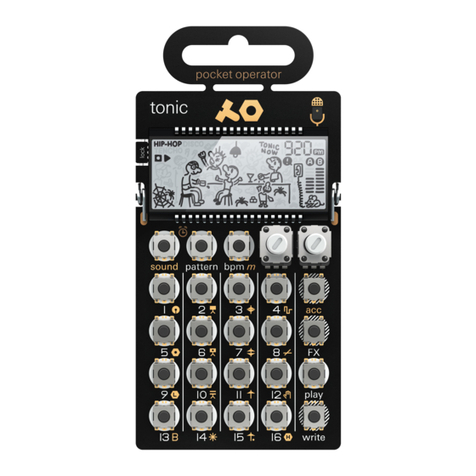
teenage engineering
teenage engineering PO-32 tonic User manual

teenage engineering
teenage engineering PO-28 robot User manual
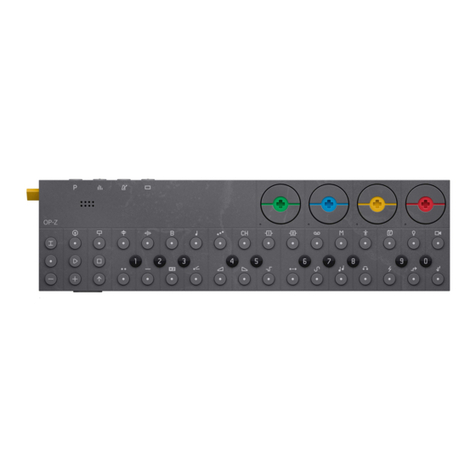
teenage engineering
teenage engineering OP–Z User manual
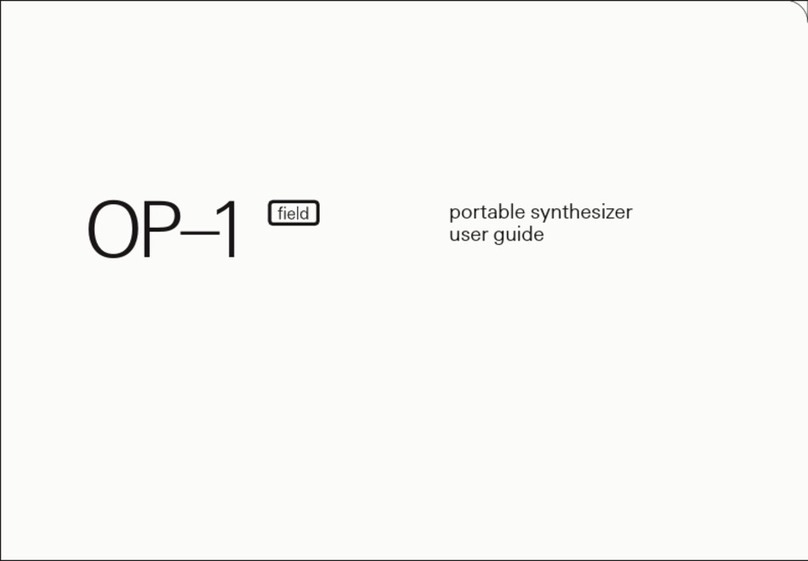
teenage engineering
teenage engineering OP-1 User manual
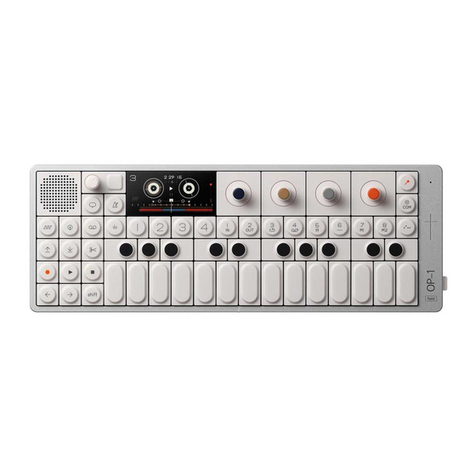
teenage engineering
teenage engineering OP-1 User manual
